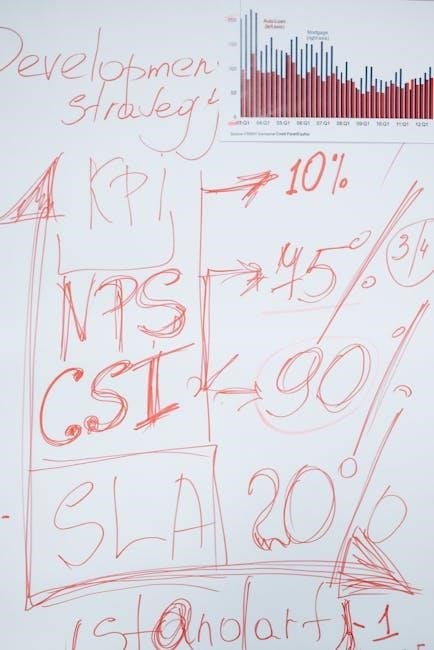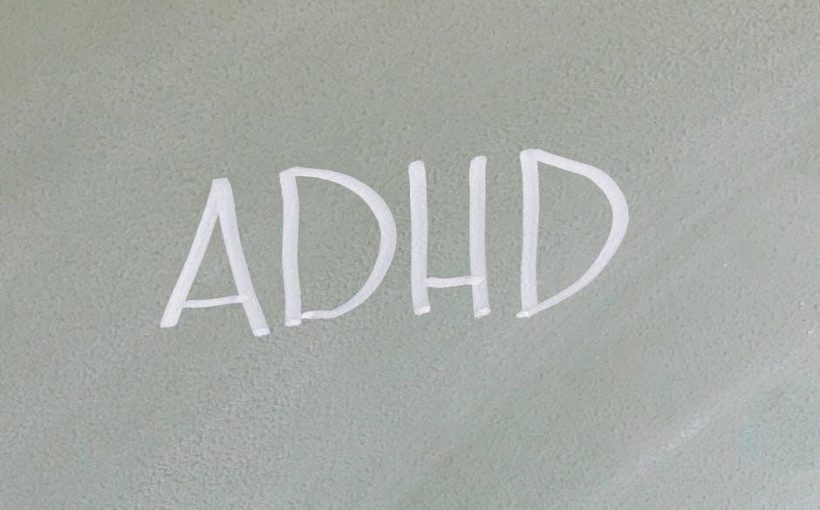Understanding and Managing Organizational Behavior
Organizational behavior (OB) explores how individuals and groups act within organizations, impacting performance. Effective management requires understanding psychological and social factors, leadership, communication, and team dynamics to enhance employee engagement and productivity.
Organizational behavior (OB) is the study of human behavior in organizational settings, examining how individuals and groups act within organizations and how this behavior impacts performance. At its core, OB explores the psychological, social, and systemic factors that influence workplace dynamics. By understanding these elements, organizations can improve employee motivation, enhance communication, and foster teamwork. Effective management of OB requires insights into leadership, decision-making, and cultural influences. This field helps organizations diagnose issues, implement strategies for improvement, and create environments that support employee engagement and loyalty. Ultimately, OB provides a framework for leaders to navigate complex social systems, driving productivity and organizational success. This introduction sets the stage for exploring the key themes, theories, and practices that shape organizational behavior in modern workplaces.
Historical Roots of Organizational Behavior
The historical roots of organizational behavior (OB) trace back to the early 20th century, emerging from the need to understand workplace dynamics and improve efficiency. The scientific management movement, led by Frederick Taylor, focused on optimizing task performance through standardized methods. Later, the Hawthorne studies revealed the importance of social factors, such as employee morale and supervision, in productivity. These findings shifted attention from purely technical aspects to the human side of organizations. The behavioral science approach further emphasized the role of psychology and sociology in understanding workplace behavior. Over time, OB has evolved, incorporating theories from psychology, sociology, and anthropology to create a holistic understanding of organizational dynamics. These historical developments have laid the foundation for modern OB practices, which aim to enhance employee well-being, collaboration, and organizational effectiveness.

Individual Differences in Organizational Behavior

Individual differences, such as personality, cognitive abilities, and emotional intelligence, significantly influence workplace behavior and interactions. Understanding these variations helps organizations foster diversity, improve collaboration, and enhance overall performance effectively.
Personality and Its Impact on Work Behavior
Personality plays a crucial role in shaping work behavior, as it influences how individuals interact with their environment and colleagues. Traits such as extraversion, conscientiousness, and openness to experience often predict job satisfaction and performance. Understanding personality types helps organizations tailor roles to individual strengths, enhancing productivity and engagement. For instance, extroverted employees may thrive in collaborative settings, while introverted individuals might excel in independent tasks. Personality assessments, such as the Big Five model, provide insights into behavioral tendencies, aiding managers in fostering a supportive work culture. By recognizing these differences, organizations can improve communication, reduce conflicts, and create a more inclusive workplace. Ultimately, leveraging personality insights allows businesses to align employee characteristics with organizational goals, promoting a harmonious and effective work environment.
Cognitive Abilities and Emotional Intelligence
Cognitive abilities and emotional intelligence (EI) significantly influence individual and organizational performance. Cognitive abilities, such as problem-solving and decision-making, are essential for tackling complex tasks and adapting to change. Emotional intelligence, which includes self-awareness, empathy, and social skills, enhances interpersonal relationships and leadership effectiveness. High EI individuals tend to manage stress better, communicate more effectively, and build stronger teams. In the workplace, these traits are critical for fostering collaboration, resolving conflicts, and driving innovation. Organizations that prioritize the development of cognitive and emotional competencies often see improvements in employee satisfaction, productivity, and overall success. By understanding and nurturing these abilities, managers can create a more resilient and high-performing workforce. Investing in training programs that enhance these skills can yield long-term benefits for both individuals and organizations.
Diversity and Inclusion in the Workplace

Diversity and inclusion are critical components of modern organizational behavior, fostering a culture of respect and collaboration. Diversity refers to the presence of differences among employees, such as race, gender, age, and cultural background, while inclusion ensures that all individuals feel valued and empowered to contribute. A diverse and inclusive workplace enhances creativity, innovation, and decision-making by leveraging varied perspectives. It also improves employee satisfaction and retention, as individuals feel accepted and supported. However, managing diversity requires addressing challenges like unconscious bias and ensuring equitable opportunities for all. Organizations can promote inclusion through diversity training, inclusive hiring practices, and policies that encourage participation from all team members. By fostering an inclusive environment, organizations can unlock the full potential of their workforce and achieve sustainable success in a globalized world.

The Experience of Work: Values, Attitudes, and Moods
Values, attitudes, and moods profoundly influence work experiences, shaping behavior and performance. They reflect personal beliefs, emotional states, and perceptions, impacting job satisfaction and organizational engagement.
Understanding Work Values and Their Influence
Work values represent the core beliefs and principles individuals hold about their jobs and careers, significantly shaping their behavior and attitudes. These values, such as autonomy, fairness, or job security, influence how employees perceive their roles and interact within organizations. Understanding work values is crucial for aligning personal goals with organizational objectives, fostering engagement, and reducing turnover. When employees’ values align with the organization’s culture, they are more likely to exhibit commitment and satisfaction. Conversely, mismatches can lead to conflict and disengagement. By recognizing and addressing these values, managers can create environments that resonate with employees’ priorities, enhancing job performance and overall well-being. Additionally, generational differences often play a role in shaping work values, requiring tailored approaches to meet diverse expectations. This understanding is essential for effective leadership and organizational success.
The Role of Attitudes in Shaping Behavior
Attitudes play a pivotal role in shaping behavior within organizations, as they reflect an individual’s evaluations, feelings, and tendencies toward objects, ideas, or situations. Comprising cognitive (beliefs), affective (emotions), and conative (intentions) components, attitudes influence how employees perceive tasks, interact with colleagues, and respond to organizational changes. Positive attitudes, such as job satisfaction and organizational commitment, often lead to desirable behaviors like increased productivity and collaboration. Conversely, negative attitudes, such as dissatisfaction or disengagement, can result in withdrawal behaviors or poor performance. Factors like leadership style, job design, and workplace culture significantly impact attitudes. Understanding and addressing these attitudes is essential for managers to foster a positive work environment, align individual behaviors with organizational goals, and enhance overall effectiveness. By recognizing the influence of attitudes, organizations can implement strategies to cultivate favorable mindsets and drive successful outcomes. Effective management of attitudes is critical for sustaining a motivated and productive workforce.
The Impact of Moods and Emotions on Work Performance
Moods and emotions significantly influence work performance, as they shape how individuals perceive tasks, interact with others, and make decisions. Moods are temporary emotional states, while emotions are more specific and intense reactions to events. Positive emotions, such as joy and enthusiasm, can enhance creativity, problem-solving, and collaboration, leading to improved productivity. Conversely, negative emotions like anxiety or frustration can impair judgment, reduce focus, and lead to errors or conflicts. Factors such as workplace stress, interpersonal dynamics, and organizational culture can trigger these emotional responses. Managing emotions effectively is crucial for maintaining a productive and harmonious work environment. Organizations can foster emotional well-being by promoting open communication, providing stress management resources, and encouraging emotional intelligence. By addressing the emotional landscape, organizations can optimize employee performance and overall success. Recognizing the role of moods and emotions is essential for creating a supportive workplace culture.
Perception, Attribution, and Decision-Making
Perception, attribution, and decision-making are interconnected processes that shape organizational behavior. Perception influences how individuals interpret information, while attribution assigns meaning to events. Decision-making is the cognitive process of selecting actions based on these interpretations, impacting organizational outcomes and effectiveness.
How Perception Shapes Organizational Behavior
Perception plays a crucial role in shaping organizational behavior by influencing how individuals interpret and make sense of their surroundings. It is the process through which people select, organize, and interpret sensory information to create a meaningful picture of their environment. In the workplace, perception affects attitudes, communication, and interactions among employees. Factors such as cognitive biases, emotions, and past experiences can distort or enhance perception, leading to varied interpretations of the same event. For instance, a manager’s perception of an employee’s performance can influence feedback and career opportunities. Misinterpretations or perceptual errors can lead to misunderstandings, conflicts, or poor decision-making. Understanding how perception operates is essential for fostering effective communication, collaboration, and a positive work environment. Organizations can promote awareness of perceptual biases to enhance employee interactions and overall organizational effectiveness.
Attribution Theory and Its Applications
Attribution theory explores how individuals assign causes to events, influencing their behaviors and attitudes in organizational settings. It distinguishes between internal attributions (e.g., personal effort or ability) and external attributions (e.g., luck or circumstances). In the workplace, managers often use attribution theory to understand employee performance. For instance, attributing success to an employee’s skill enhances morale, while blaming external factors for failure fosters empathy. Misattributions, such as overestimating personal contributions or underestimating others’, can lead to conflicts or poor decision-making. Organizations can apply attribution theory to improve communication, feedback, and conflict resolution. By promoting accurate attributions, leaders can enhance accountability, encourage learning from failures, and foster a fair work environment. Understanding attribution processes helps align individual and organizational goals, fostering a culture of growth and collaboration.
Improving Decision-Making Processes
Effective decision-making is a cornerstone of organizational success, requiring a structured approach to ensure clarity and alignment with goals. Decision-making processes can be enhanced by understanding individual and group dynamics, such as cognitive biases, heuristics, and groupthink. Organizations should encourage critical thinking, active listening, and open communication to mitigate these challenges. Additionally, fostering a culture of psychological safety allows employees to voice concerns and innovative ideas without fear of judgment. Leaders can also leverage decision-making models, such as the rational model or intuition, depending on the situation’s complexity. Incorporating data analytics and diverse perspectives further improves the quality of decisions. Training employees in decision-making skills and promoting a collaborative environment are essential for driving sound outcomes. By addressing these factors, organizations can streamline decision-making, reduce errors, and enhance overall performance.
Learning and Motivation in Organizations
Learning and motivation are vital for enhancing organizational effectiveness, fostering employee growth, and improving performance. They enable individuals to adapt to changes and align their efforts with organizational goals, creating a positive work environment that drives success and innovation. By understanding these dynamics, organizations can better support employee development and achieve sustainable outcomes. Effective learning and motivation strategies ensure that employees are equipped to meet challenges and contribute meaningfully to the organization’s mission and vision. This section explores how organizations can cultivate a culture of continuous learning and motivation, ensuring long-term success and employee satisfaction.
Theories of Learning and Their Organizational Implications

Learning theories provide frameworks for understanding how individuals acquire knowledge and skills, which are crucial for organizational success. Behaviorist theories emphasize observable behaviors shaped by reinforcement, while cognitive theories focus on mental processes like problem-solving. Social learning theory highlights learning through observation and imitation, stressing the role of modeling in skill development. These theories guide organizational practices, such as designing effective training programs, fostering a culture of continuous learning, and improving employee performance. By aligning learning strategies with these theories, organizations can enhance employee adaptability, innovation, and overall effectiveness. Understanding these theories helps organizations create environments where learning is intentional, meaningful, and aligned with business goals, ultimately driving sustainable growth and competitiveness. Effective application of learning theories ensures that employees are well-equipped to meet organizational challenges and contribute to long-term success.
The Nature of Work Motivation
Work motivation refers to the psychological forces that drive individuals to achieve organizational goals. It is a complex and dynamic process influenced by both intrinsic and extrinsic factors. Intrinsic motivators, such as personal satisfaction, autonomy, and a sense of accomplishment, often lead to sustained and meaningful engagement. Extrinsic motivators, including rewards, recognition, and job security, can also significantly impact behavior. Motivation is closely tied to job satisfaction and performance, with motivated employees typically demonstrating higher commitment and productivity. Understanding the nature of work motivation is essential for organizations to create environments that foster engagement and align individual goals with organizational objectives. By addressing the underlying psychological needs of employees, organizations can enhance motivation, improve job satisfaction, and ultimately achieve better outcomes. Effective motivation strategies are critical for sustaining a workforce that is driven, innovative, and committed to organizational success.

Motivation Tools: Job Design and Goal Setting
Job design and goal setting are powerful tools for enhancing employee motivation and performance. Job design involves structuring tasks to align with individual strengths and interests, fostering engagement and satisfaction. Techniques like job enrichment, which adds complexity and challenge, and job rotation, which provides variety, can reduce monotony and boost motivation. Goal setting, based on theories like SMART (Specific, Measurable, Achievable, Relevant, Time-bound), helps employees focus on clear objectives. Challenging yet attainable goals often lead to higher levels of commitment and performance. Both job design and goal setting encourage accountability and align individual efforts with organizational goals. When implemented effectively, these tools create a motivational environment that enhances productivity, innovation, and overall job satisfaction, benefiting both employees and the organization. Properly designed jobs and well-defined goals are essential for sustaining a motivated and driven workforce.

Organizational Culture and Leadership
Organizational culture reflects the shared values, beliefs, and norms that define a workplace, influencing behavior and decision-making. Leadership plays a pivotal role in shaping and sustaining this culture, ensuring alignment with organizational goals and fostering a collaborative environment that drives success and innovation. A strong, positive culture, guided by effective leadership, enhances employee engagement, satisfaction, and overall performance, creating a sustainable competitive advantage. Leaders must actively model and promote the desired cultural values to build trust and inspire collective effort toward achieving organizational objectives. Culture and leadership are deeply interconnected, each reinforcing the other to create a cohesive and thriving organizational ecosystem.
Defining and Measuring Organizational Culture
Organizational culture refers to the shared values, beliefs, and norms that define how individuals within an organization interact and behave. It encompasses the collective mindset, unwritten rules, and practices that shape workplace dynamics. Culture is reflected in artifacts, such as symbols and rituals, and in the way employees perceive and interpret their environment. Measuring organizational culture involves assessing these elements through observations, surveys, and interviews. Common practices include evaluating workplace climate, employee engagement, and alignment with stated values. Understanding culture is critical for identifying strengths and areas for improvement. By measuring culture, organizations can better align their practices with strategic goals and foster a positive work environment that supports productivity and innovation. Accurate assessment tools ensure actionable insights, enabling leaders to drive meaningful cultural change and enhance organizational effectiveness. This section explores frameworks and methods for defining and evaluating organizational culture effectively.
The Role of Leadership in Shaping Culture
Leadership plays a pivotal role in shaping organizational culture by setting the tone, modeling behaviors, and influencing values. Leaders’ actions, decisions, and communication style significantly impact the cultural landscape. They establish the vision and mission, which guide the organization’s identity and purpose. Effective leaders foster a culture of trust, collaboration, and innovation by promoting open communication and empowering employees. Their ability to lead by example reinforces desired norms and behaviors. Moreover, leaders’ commitment to diversity, equity, and inclusion shapes the cultural fabric. They also influence the work environment, employee engagement, and overall organizational performance. Strong leadership ensures alignment between cultural values and strategic goals, driving long-term success. By actively engaging in cultural development, leaders create a workplace where employees thrive and contribute meaningfully to the organization’s objectives. This section highlights how leadership serves as the cornerstone for building and sustaining a positive organizational culture.
Effective Communication Strategies
Effective communication is a cornerstone of successful organizational behavior, fostering collaboration, trust, and productivity. Leaders and employees must employ strategies that ensure clarity, accuracy, and relevance in their interactions. Active listening, clear messaging, and feedback loops are essential for preventing misunderstandings. Nonverbal cues, such as body language and tone, also play a critical role in conveying intent. Technology, like digital platforms, can enhance communication but must be used thoughtfully to maintain personal connections. Consistency in messaging across all levels ensures alignment with organizational goals. Additionally, fostering an environment of transparency and openness encourages employees to share ideas and concerns. Training programs focused on communication skills can further strengthen these practices. By implementing these strategies, organizations can build a culture of effective communication, driving collaboration and overall performance.
Managing Conflict and Change

Effective conflict resolution and change management require open communication, leadership guidance, and clear strategies to align with organizational goals and foster a positive work environment.

Understanding and Managing Conflict in Organizations
Conflict in organizations arises from differences in goals, values, or interests among individuals or teams. It can stem from task, relationship, or process-related issues. While some conflict may foster innovation and creativity, excessive or unresolved conflict can hinder productivity and team morale. Understanding conflict requires analyzing its sources, such as communication breakdowns, resource competition, or role ambiguities. Effective conflict management involves strategies like open communication, active listening, and problem-solving approaches. Leaders play a critical role in mediating disputes and fostering a collaborative environment. Training employees in conflict resolution skills, such as negotiation and emotional intelligence, can also mitigate negative outcomes. Addressing conflict constructively ensures alignment with organizational goals and promotes a positive workplace culture. By managing conflict effectively, organizations can enhance employee satisfaction, improve decision-making, and maintain a cohesive work atmosphere.
Leading Organizational Change and Development
Leading organizational change and development involves guiding the organization through transitions to achieve long-term success. Change management requires a structured approach to ensure smooth implementation. Leaders must communicate the vision clearly, address resistance, and engage employees in the process. Effective change leadership includes fostering a culture of adaptability, building trust, and providing necessary resources. Organizational development focuses on improving processes, structures, and systems to enhance efficiency and innovation. Techniques such as continuous improvement initiatives, training programs, and strategic planning are essential. Leaders must also monitor progress, provide feedback, and make adjustments as needed. Successful change management ensures alignment with organizational goals, drives growth, and prepares the organization for future challenges. By fostering a proactive mindset, leaders can turn change into an opportunity for sustained development and competitive advantage.
